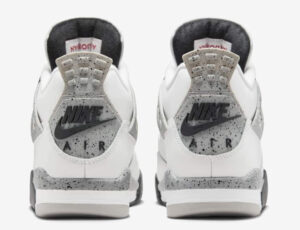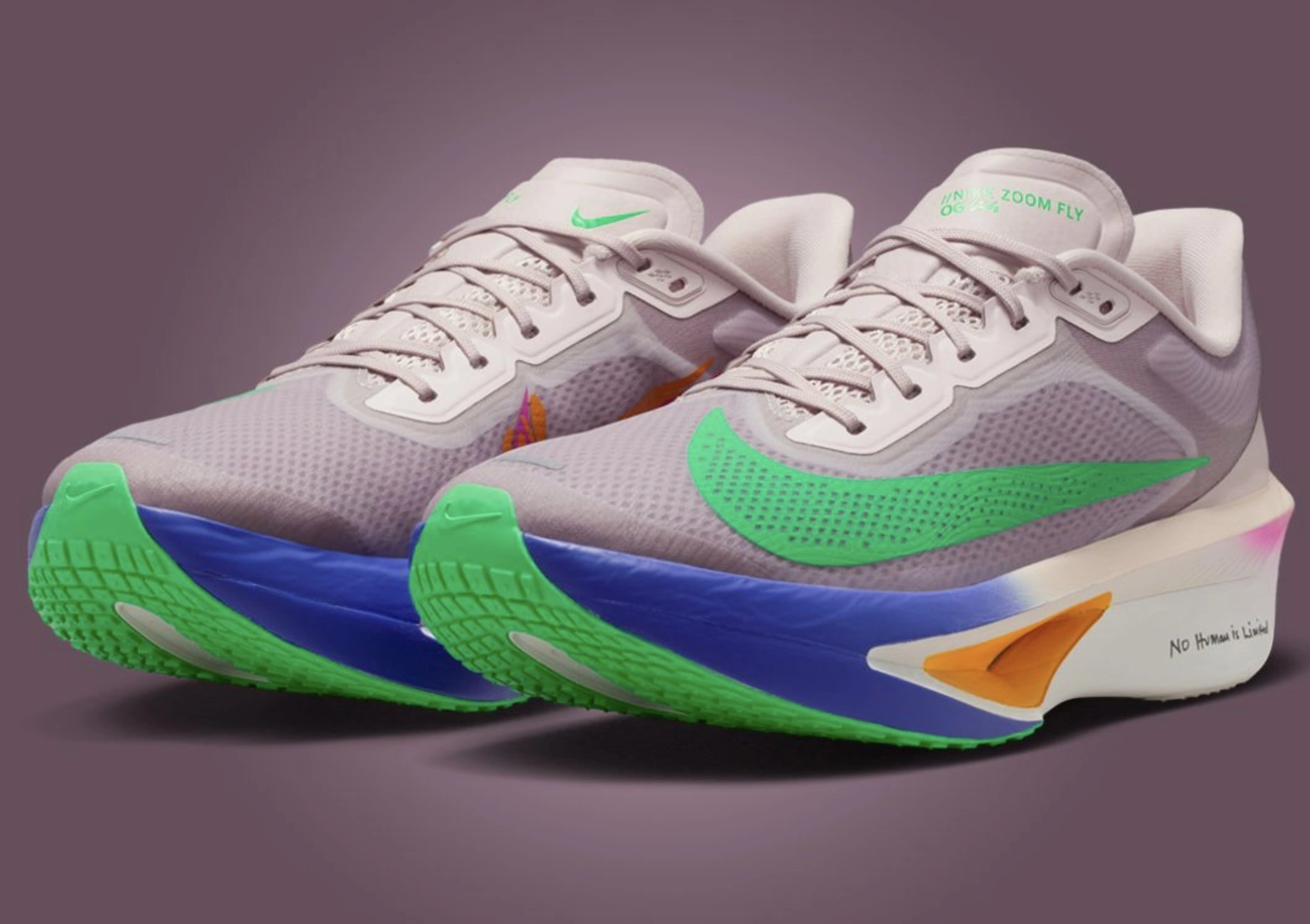There are shoes that define a season. Others define a decade. But the Nike Air Jordan 4 “White Cement” does something rarer—it transcends time. It is not merely a shoe, nor just another numbered silhouette in a long line of retros. It is a touchstone, a blueprint, a monument built in leather and rubber that speaks not just to basketball, but to American identity, pop culture mythmaking, and the alchemy of design.
Originally released in 1989 and famously resurrected in 1999, 2012, and again in 2016 with the coveted “Nike Air” heel branding, the “White Cement” remains one of the most enduring and recognizable colorways in sneaker history. Its return always signals something beyond nostalgia: a reminder of craftsmanship, performance heritage, and the aesthetic discipline that once defined Nike’s golden era of innovation. With each retro, collectors don’t just remember—they reaffirm.
The Architecture of a Classic
At first glance, the Jordan 4 “White Cement” is simplicity incarnate: a clean white upper, speckled grey accents, black trim, and splashes of fire red on the tongue. But its restraint is deceptive. Designed by Tinker Hatfield—Nike’s Renaissance man and the architect of the Air Jordan 3, Air Max 1, and countless icons—the AJ4 was the first in the series to incorporate visible mesh, oversized “wings” for lockdown support, and a multi-layered sole unit that was both aggressive and functional. It was a shoe built for flight—literally and symbolically.
Where its predecessor, the Jordan 3, was about proving the brand’s credibility (after MJ nearly left Nike), the Jordan 4 was about refinement and risk. It extended the Jordan ethos into new territory: technical, architectural, emotionally evocative. The “White Cement” colorway, in particular, balanced all of Hatfield’s experimentalism with a neutral palette that allowed its form to speak clearly—bold, structured, and ready.
The signature speckled overlays weren’t mere decoration. They were visual ballast, adding dimension and texture to the shoe’s geometry. At a time when many performance sneakers leaned into neon and synthetic flash, the Jordan 4 “White Cement” countered with timeless modernism—less ‘80s excess, more Bauhaus in motion.
1989 and the Birth of a Cultural Symbol
The cultural explosion of the Jordan 4 “White Cement” can’t be separated from its place in time. In 1989, Jordan himself was not yet the six-ringed deity we now mythologize—he was hungry, emerging, immortal in potential. The Jordan 4 was on his feet when he executed “The Shot,” his game-winning jumper over Craig Ehlo during the 1989 NBA Playoffs. In slow motion, as the ball arcs through the air and Ehlo collapses in disbelief, the sneakers on MJ’s feet are as much a protagonist as his outstretched follow-through. That image is etched into basketball folklore—and sneaker culture followed suit.
That same year, Spike Lee, already an iconoclastic filmmaker, cast the Jordan 4 in Do the Right Thing, where the character Buggin’ Out is harassed after someone scuffs his pristine pair. The scene was comedic, but culturally profound. It marked the moment shoes crossed the threshold from sport to symbol. The “White Cement” wasn’t just gear—it was sacred. A vessel of identity, aspiration, pride.
The Aesthetic of Cleanliness and Control
There’s a reason white shoes remain aspirational. White connotes purity, control, mastery over the elements. On the street, a white shoe is a paradox: it wants to stay immaculate in an environment built for decay. The “White Cement” performs this balancing act with effortless elegance. It’s a shoe that wears its intention on its surface.
For those who wear it today—whether out of the box or after years of keeping it deadstock—it communicates a knowledge of canon. You don’t wear “White Cements” by accident. You wear them to say you understand the lineage, the stakes, the weight of what it means to walk in history. You wear them to suggest not just taste, but reverence.
Yet the appeal is not purely nostalgic. There’s something timelessly architectural about the AJ4 silhouette. Its angularity, visible air sole, and overlapping panels give it a modular, almost industrial charm. Unlike many modern shoes that rely on amorphous foam blobs and performance gimmickry, the Jordan 4 “White Cement” presents its technology with transparency—visible mesh, visible air, visible straps. It doesn’t hide its functionality. It wears it like armor.
Retro After Retro: The Eternal Return
What makes the “White Cement” so resilient is its capacity to renew itself without compromise. Unlike other classics that are periodically watered down or mutated for mass appeal, each retro of the Jordan 4 “White Cement” has strived for fidelity. The 2016 reissue, for example, restored the original “Nike Air” branding on the heel, replacing the Jumpman that appeared in prior retros. It was a detail that mattered deeply to collectors—a sign of respect, a return to roots.
Sneakerheads often describe the moment of unboxing a pair like a sacrament. With the “White Cement,” that experience carries the gravity of legend. You’re not just holding a shoe. You’re holding proof that something good, something designed with intent and soul, can last.
Even more, you’re holding continuity—between past and present, between form and function, between court and street. In an era where hype often overrides heritage, and colorways multiply like fast fashion, the “White Cement” stands still. It is not subject to time. It defines it.
Flow
There are sneakers you wear until they fall apart. Then there are sneakers that feel like they belong in ink—written about, archived, displayed. The Nike Air Jordan 4 “White Cement” occupies both realities. It can be scuffed, creased, even forgotten for a moment. But it never disappears. Its return is always a homecoming.
And in that way, it’s more than footwear. It’s architecture you can wear. It’s story you can lace up. It’s flight, not as metaphor, but as memory. White cement doesn’t just support. It elevates. And for generations of sneaker lovers, that elevation is permanent.
No comments yet.









